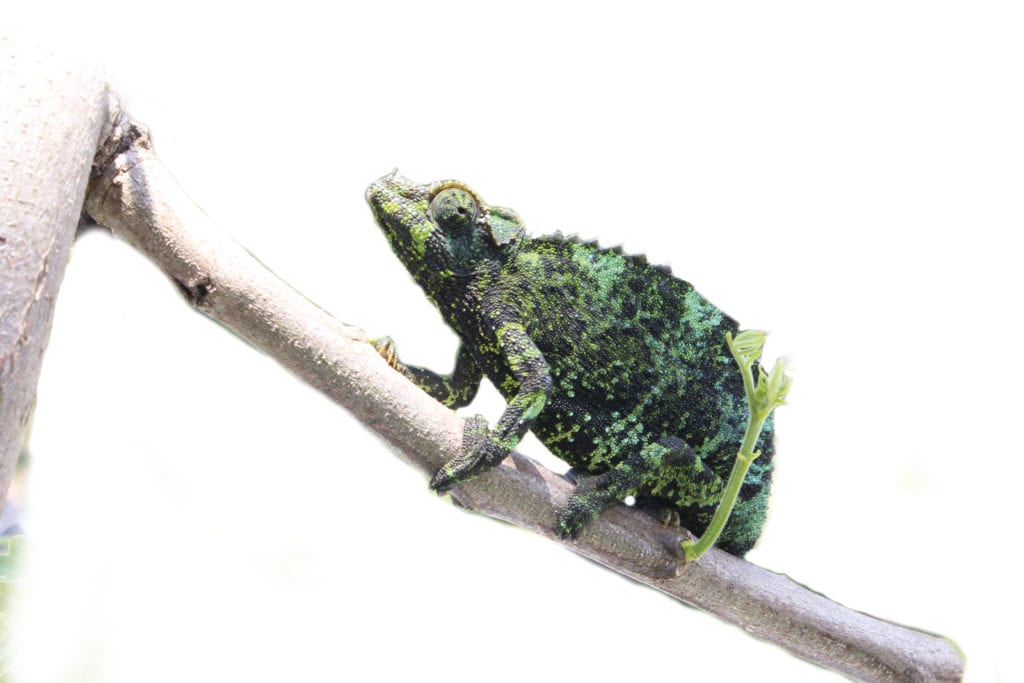Chameleon Color-Changing Ability (October 8)


Chameleons are famous for their color-changing ability. Chameleons have highly structured skin. The outer layer of skin is transparent. Beneath the top layer are two layers of skin with red and yellow pigments. Below these are two more layers, one reflecting blue light and the other reflecting white light. Deeper still is a layer of dark brown pigment. The color change happens when the pigment cells at any particular layer expand or contract. For example, when a chameleon is calm, and the skin is not excited, the yellow pigments are partly contracted – letting the reflected blue light through (blue and yellow make the chameleon appear green). When a chameleon is angry, he may turn yellow because the yellow pigments expand (blocking the blue light from reflecting through).
Chameleons can show a dazzling display of reds, pinks, yellow, blues, greens, and browns. Their basic color pattern is camouflage green; however, they will change color due to heat, light, and mood. The brain sends a signal to the pigments to contract or expand causing the chameleon to change color in about 20 seconds. This system of changing colors is extraordinarily complex! The more we study creation, the more we find amazing complexities that point to a Master Designer!
